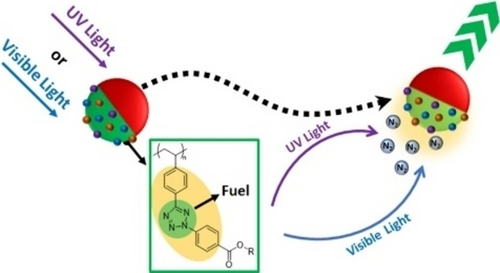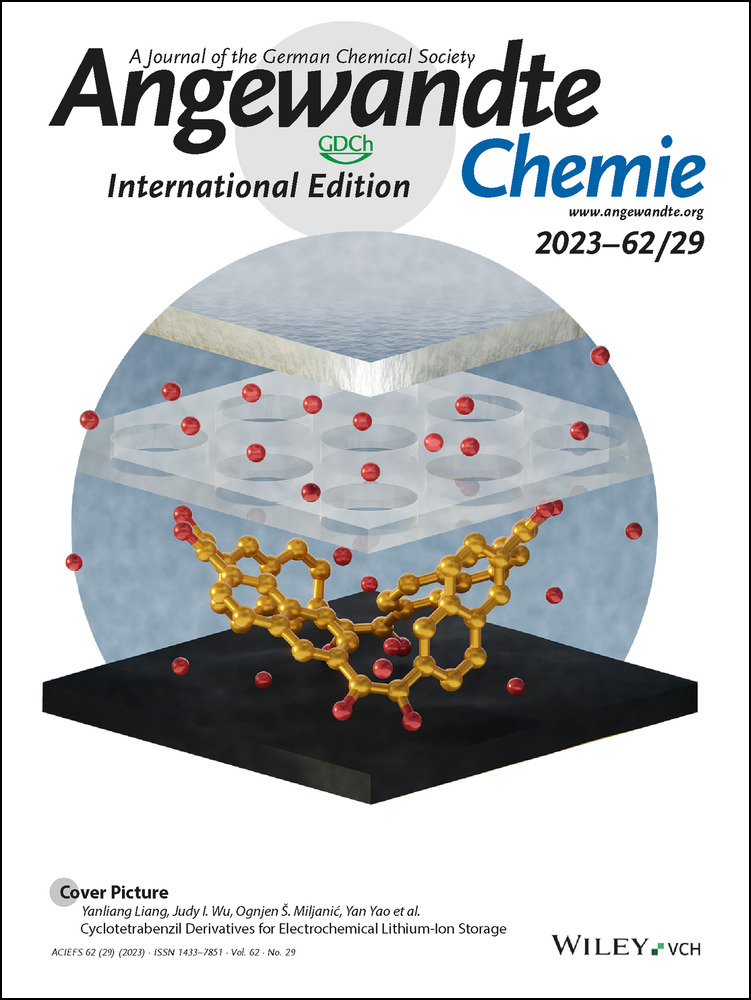Tetrazole Linkages as Photoactivated Fuels for Light-Regulated Photothermal/Photocatalytic Propulsion of Versatile Polymer Nanoplatforms
Graphical Abstract
Photoactivated versatile polymer nanoplatforms with asymmetric geometry enable on-demand integration of various functionalities via tetrazole linkages. In response to UV or visible light, tetrazoles as light-triggered fuels simultaneously perform photocatalytic N2 release and photothermal conversion within the polymer nanoplatforms for powering the multimode synergistic propulsion, thus showing potential in bio-applications.
Abstract
Colloidal motors with multimode propulsion have attracted considerable attention because of enhanced transportability. It is a great challenge to fabricate colloidal motors powered by a single engine for multimode synergistic propulsion. Herein, we report on Janus versatile polymer nanoplatforms integrating various functionalities via tetrazole linkages for light-regulated multimode synergistic propulsion in the liquid. The presence of tetrazole linkages in the polymers endows the nanoparticles with various photoresponsive capabilities. A sole energy source (ultraviolet or visible light) simultaneously activates photocatalytic N2 release and photothermal conversion within the tetrazole-containing polymer phase at one side of asymmetric nanoparticles for converting light energy into photothermal/photocatalytic propulsion independent of the surrounding chemical medium. The photoactivated locomotion using tetrazoles as light-triggered fuels highly corresponds to light wavelengths, light powers and tetrazole contents. The tetrazole linkages capable of incorporating various functionalities to the polymer nanoparticles allow on-demand customizing of the colloidal motors, showing great potential in bio-applications.
Conflict of interest
The authors declare no conflict of interest.
Open Research
Data Availability Statement
The data that support the findings of this study are available in the supplementary material of this article.





